International Journal of Pharmaceutical Sciences and Developmental Research
Moringa Oleifera: Panaromic View on Nutritional, Therapeutic Activity and Patent Landscape
Powar Priyatama V*
Cite this as
Priyatama VP (2017) Moringa Oleifera: Panaromic View on Nutritional, Therapeutic Activity and Patent Landscape. Int J Pharm Sci Dev Res 3(1): 024-028. DOI: 10.17352/ijpsdr.000012Phytomedicines are believed to have benefits over conventional drugs and are regaining interest in current pharmaceutical research. Moringa oleifera is a multi-purpose plant used a human food, neutraceutical and alternative for medicinal purpose worldwide. It is sometimes called a “Miracle Tree” because of all its parts are used for nutritional, pharmacological properties. It is good source of protein, vitamins, oils, fatty acids, micro/macro minerals elements and various phenolic compounds. It is also reported as anti-inflammatory, antimicrobial, antioxidant, anticancer, cardiovascular, hepato-protective, anti-ulcer, diuretic, antiurolithiatic, and antihelmintic. This manuscript provides a brief overview about medicinal and nutritional potential of Moringa and patent landscape of Moringa oleifera plant.
Introduction
Cancer is one of the most common life-threatening diseases of mankind, causing as many as 7.6 million deaths in a year, 64% from the economically developing world. According to the cancer reports published by the World Health Organization (WHO) and the World Cancer Research Fund, the incidence of cancer are still growing specifically due to diet, environmentand carcinogenic virus infections. Cervical cancer, in women, is the second most common cancer worldwide, next only to breast cancer. In India, cervical cancer is the most common woman-related cancer, followed by breast cancer. The current estimates indicate approximately132, 000newcases diagnosed and 74,000 deaths annually in India, accounting to nearly 1/3rd of the global cervical cancer deaths. Indian women face a 2.5% cumulative lifetime risk and 1.4% cumulative death risk from cervical cancer. 80% of the new cervical cancer cases occur in developing countries, like India, which reports approximately one fourth of the world’s cases of cervical cancer each year. The cancer mostly affects middle- aged women (between 40 and 55 years), especially those from the lower economic status who fail to carry out regular health check-ups due to financial inadequacy. The statistical data about cancer which describes different types along with the crude incident rate per year shown in following (Figure 1), [1] and Prevalence of high risk human papillomavirus (HPV) Types 16 as shown in (Figure 2) which both figures describes the severity of cervical cancer.
The drugs currently used in the cancer chemotherapy have shown adverse effects such as nephrotoxicity, cardio toxicity, peripheral neuropathies, etc. However, due to less toxic and.
Adverse effects of phytochemicals, the research on medicinal plants and cancer has been intensified [2].
Intensive research on Moringa oleifera plant carried out for evaluation of potential of anticancer activity described as follows:
• The M. oleifera dichloromethane extract shows high antioxidant activity, potent cancer cell antiproliferation, and induction of quinone reductase [3].
• Formulation of anti-cancerous colloidal silver using Moringa olifera stem bark extract. Which was tested against human cervical carcinoma cells (HeLa) and cell morphology was further evaluated using 4,6-diamidino-2-phenylindole (DAPI) staining. The efficiency of green synthesized AgNPs was studied with the help of fluorescence activated cell sorting (FACS) and was shown to induce apoptosis through reactive oxygen species (ROS) generation in HeLa cells [4].
• The potential cytotoxic activity of seed essential oil obtained from M. oleifera carried out on HeLa, HepG2, MCF-7, CACO-2 and L929 cell lines with various concentration like 0.15 to 1 mg/mL for 24h, and the cytotoxicity was assessed using MTT assay. This study showed a significant reduction in cell viability. Additionally, HeLa cells were the most affected cells followed by HepG2, MCF-7, L929 and CACO-2, where the percentages of cell toxicity recorded were 76.1, 65.1, 59.5, 57.0 and 49.7%, respectively. Furthermore, the IC50 values obtained for MCF-7, HeLa and HepG2 cells were 226.1, 422.8 and 751.9 µg/mL, respectively [5].
Health benefits of Moringa as bellow and (Figure 3-6) describe about nutritive value Pad & leaf, vitamins, electrolytes and minerals respectively:
Moringa oleifera plant ownsexclusive nutritional potentials which promise to millions of impoverished communities inglobe who in need of nutritional supplements.
➢ Moringa oleifera leaves 100 g carry contains 9.8 g of protein
➢ Moringa oleiferapods, seeds are a virtuous source of oleic acid, B-complex vitamins and vitamin C. 100 g of pods contain 145 µg. Vitamin Bfunctions as co-enzymes in carbohydrate, protein, and fat metabolism. Vitamin Chelps the body improve immunity against infectious agents.
➢ Moringa oleifera fresh leaves or growing tips are the richest source of vitamin A. 100 g of fresh leaves carry 7564 IU. Which compromises several benefits, like mucus membrane repair, maintenance of skin integrity, vision and immunity.
• Moringa Oleifera leaves are supremecradle of minerals like calcium, iron, copper, manganese, zinc, selenium, and magnesium. Iron eases anemia. Calcium is essential for bone mineralisation. Zinc plays a vital role in hair-growth, spermatogenesis and skin health.
Moringa oleifera or drumstick with family Moringaceae, and it is grown broadly in many Southeast Asian countries particularly in Thailand, India, Philippines and Pakistan. Moringa oleifera has been found to be anexcellent source of polyphenols, flavonoids and antioxidants [8]. Moringa oleifera is aeffective antitumor plant and numerous bioactives ofanticancer potential have been isolated, identified and reported. Niazimicin, niaziminin, beta-sitosterol-3-o-beta-D-glucopyranoside showed antitumor action. Studies have discovered possible chemo-preventive & antiproliferative potential of Moringa oleiferaagainst chemical carcinogenesis, along with its role in epithelial ovarian cancer, colon cancer, skin carcinogenesis [9,10]. Phytochemicals such as vanillin, omega fatty acids, carotenoids, ascorbates, tocopherols, beta-sitosterol, moringine, kaempferol, and quercetin have been stated in its flowers, roots, fruits and seeds. These compounds have innumerable biological activitiessuch as antioxidant, anticarcinogenic, immunomodulatory, antidiabetic, antiatherogenic, and hepatoprotectivefunctions , regulation of thyroid status [11]. The medicinal value of Moringaoleiferais due to the presence of a diversity of phytochemicals as shown in bellow [Table 1]. The therapeutic potential of Moringa oleifera may be due to the presence of simple sugar, rhamnose and a fairly unique group of glucosinolates and isothiocyanates.
In the previous ten years, numerous research articles, reports, and patents have been published on Moringa oleifera plant for pharmacological activities.
• “Composition of eleven herbals for treating cancer”: US 6780441 B2: Patent publised by Ranjitsinh Solanki in 2004. The present pharmaceutical or medicinal preparation which comprises a mixture of the numorous herbs like Withaniasomnifera 8-12%, Chlorphytonborivilianum 3-8%, Boerhaviadiffusa 8-12%, Elephantopusscaber 3-8% , Moringa oleifera 8-12%, Tecoma undulate 8-12%, Bauhinia purpurea 8-12%, Ficusracemosa 3-8%, Cyperusrotundus 8-12%, Sphaeranthusacmella 3-8% and Tinosporacordifolia 17-23%. The herbal formulation of the invention is effective for the treatment squamous cell carcinomas, tumours and other metastatic states, including lung cancer.
• “Nitrile glycoside useful as a bioenhancer of drugs and nutrients, process of its isolation from moringa oleifera”: US 6858588 B2: Patent publised by SumanPreet Singh Khanuja in 2005. The invention recounts the process for the isolation of novel nitrile glycoside bioactive with Formula I named as Niaziridin from Moringa oleifera pods. This relates bioenhancing activity which commonly used for antibiotics such as rifampicin, tetracycline and ampicillin against Gram positive and negative bacteria. The biomolecule augments the absorption of drugs, vitamins, nutrients through the gastro-intestinal membrane increasing their bio-availability and bioactivity. Therefore niaziridincan be used in combination therapy with drugs and nutrients resulting in reduced drug associated toxicity, reduced cost and duration of chemotherapy.
• “Nutraceutical Moringa composition”: US 20060222682 A1: Patent published by David Andrews in 2006.This invention incorporates portions from the Moringa plant into a nutraceutical beverage which provide a therapeutic effect in a person. The leaves, seeds, and fruit of the Moringa Oleifera are used in methodology to provide a biologically metabolized nutritional composition for health, well-being, and for dealing with numerous diseases of mankind.
• “Herbal composition for treatment of immunocompromised conditions”: US 20070122496 A1: Patent published by NandkishorManagoli in 2007. This discovery provided pharmaceutical or medicinal preparation. Which comprises a mixture of active ingredients from numerous herbs like Moringa oleifera, Boerhaviadiffusa, Onosmabracteatum, Bauhinia variegata, Spheranthusindicus, Tecomellaundulata, Chlorophytumborivilianum, Ficusracemosa, and Cyperusrotundus.As per earlier report showed a marked improvement in her overall quality of life by numerous herbs. The patient gained a total of 5.4 kgs over the prior six month period during treatment with above herbal formulation. The patient’s appetite has continual to increase, and there is no complaint of fatigue, malaise, or anxiety. Also level of hemoglobin improved by 3.2 gm %, and has been stable at a level of 13.0 gm % over the three month period. The patient’s CD4 counts were elevated to normal levels (i.e. above 500 cells), and the patient’s HIV viral load diminished, indicating an improvement of the patient’s immune response. These therapeutic effects can be directly attributed to the immunostimulant, anxiolytic, antioxidant, adaptogenic effects of the combination herbal preparation which serves as a preventative treatment to prevent cancer or tumors from forming in genetically or environmentally susceptible individuals.
• “Preparation of oligosaccharide bionanoparticles from moringa oleifera lam”: Indian Patent 218499 patent published by Dr (Mrs) SugunaShanmugasundaram in 2008. Which described process of preparation of bionanoparticles from Moringa oleifera gum which were of size 60 nm to 100nm diameter. The Objectives of the present invention to prepare bionanoparticles of Moringa oleifera measuring less than 150 nm and an ability to protect plasmid DNA and E.coli RNA, to inhibit cell division in Onion root and human Carcinoma cells. Bionanoparticles were formulated from the soft fibres through controlled hydrolysis, selective size fractionation by ultrafiltration and particle preparation by spray drying at 100°C temperature.The treated cells by prepare bionanoparticles of dose 30mg/ml, show blebbing which eventually leads to apoptosis and death. This indicates the ability of Moringa oleiferabionanoparticles to arrest the growth of human epidermoid carcinoma cells.
• “Moringaceae tablet and its producing method”: CN 1935165: Jiaheng Zhang in 2009 revealsformulation method of Moringa oleifera lozenge and its production method. Moringa oleiferalozenge has several edible and medicinal values, nutritive value and is made up by using Moringa oleiferaleaf or seed. Moringa oleifera, can be used as a adjunctive therapy for the treatment of fever, bronchitis, eye / ear infections, scurvy, skin infections, arthritis, etc., it can used to reduce blood pressure, control blood sugar, reduce mental anxiety, rid the body of waste, supplement the body nutrition, reduce fatigue, improve sleep and so very helpful. Production process explained, Moringa oleiferaleaves dehydrate, grind, mesh to remove impurities which further used to prepare tablet with starch.
• “Dietary Supplement Composition” WO2011098819: Patent published by Richard Gomez in 2011.A dietary supplement composition comprising bioactives from Moringa oleifera, Curcuma longa and Piperine. In one facet of the discovery, the dietary supplement composition comprises between about 48% to about 58% by weight of Moringa oleifera, between about 37% to about 47% by weight of Curcumin from Curcuma longa, and between about 2% to about 4% by weight of Piperine which show satisfactory results in experiment.
• “Synergistic phytochemical composition for the treatment of obesity” US 8541383 B2: Ganga Raju Gokaraju in 2013 discloses Synergistic anti-adipogenic, lipolytic compositions for the prevention of adipogenesis and lipolysis mediated diseases. Two extracts selected from enriched demethylatedcurcuminoids obtained from Curcuma longa(10%), Moringa Oleifera (30-70%) and Kaempferol-3-O-glucoside of formula V, Quercitin-3-O-glucoside of formula VI, Niazinin; (Mahanine of formula IX, Mahanimbine of formula X, isomahanine of formula XI and Ecuchrisitm) Murrayakoenigii (15-45%). The anti-adipogenic and pro-lipolytic compositions optionally contain one or more anti-obesic agents. These compositions are beneficial for preventing anti-inflammatory and free radical mediated diseases.
Conclution
The research on M. oleifera is yet to gain importance in India. It is essential that the nutrients of this wonder tree are exploited for a diversity of purposes. Moringa Oleifera has prodigious anti-diabetic, anti-cancer, anti-inflammatory, antimicrobial, anti-ulcer, antioxidant, antiurolithiatic, antihelmintic, hepato-protective and diuretic action. Moringa Oleifera plant is the most inexpensive and credible alternative to not only providing good nutrition, but also the cure and prevention of a lot of diseases as discused. Patent study and clinical studies with human subjects should be taken to investigate: nutrient bio-availability, bio-toxicity, immunomodulatory effect in HIV/AIDS, and sexually transmitted infections .This review provide momentary outline about medicinal , nutritional potential regarding vitamins , minerals, electrolytes of Moringa and patent landscape of Moringa oleifera plant regarding anti-adipogenic, lipolytic compositions, dietary supplement formulation, production method for lozenges, preparation of bionanoparticles for human epidermoid carcinoma cells, Herbal composition for treatment of immunocompromised conditions, formulation of nutraceutical beverage, herbal formulation for the treatment squamous cell carcinomas, tumours and other metastatic states.
- Pelechas E, Voulgari PV, Drosos AA (2017) Sirukumab: a promising therapy for rheumatoid arthritis. Expert Opinion on Biological Therapy 17: 755-763. Link: https://goo.gl/8ev2e9
- Flouri I, Markatseli TE, Voulgari PV, Kyriaki AB, Papadopoulos I, et al. (2014) Comparative effectiveness and survival of infliximab, adalimumab, and etanercept for rheumatoid arthritis patients in the Hellenic Registry of Biologics: Low rates of remission and 5-year drug survival. Semin Arthritis Rheum 43: 447-457. Link: https://goo.gl/iw9arn
Article Alerts
Subscribe to our articles alerts and stay tuned.
 This work is licensed under a Creative Commons Attribution 4.0 International License.
This work is licensed under a Creative Commons Attribution 4.0 International License.
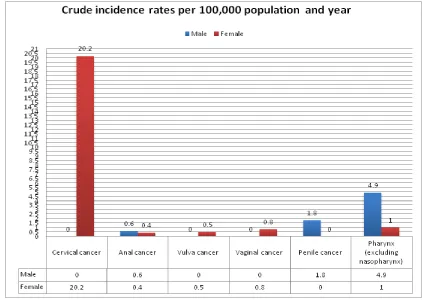
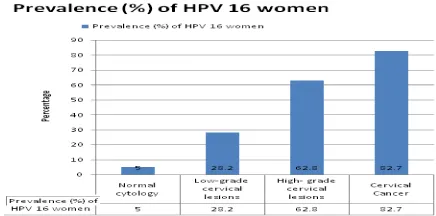
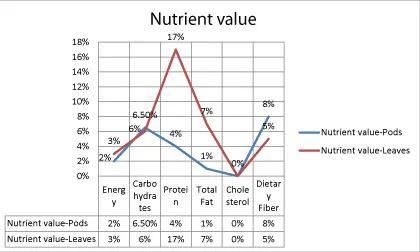
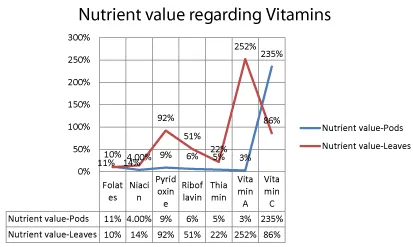
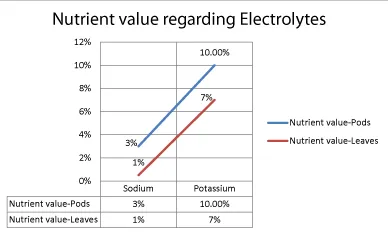
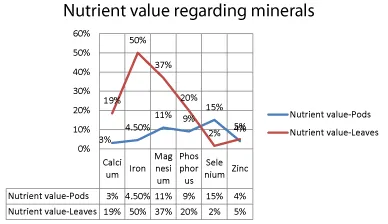

 Save to Mendeley
Save to Mendeley
